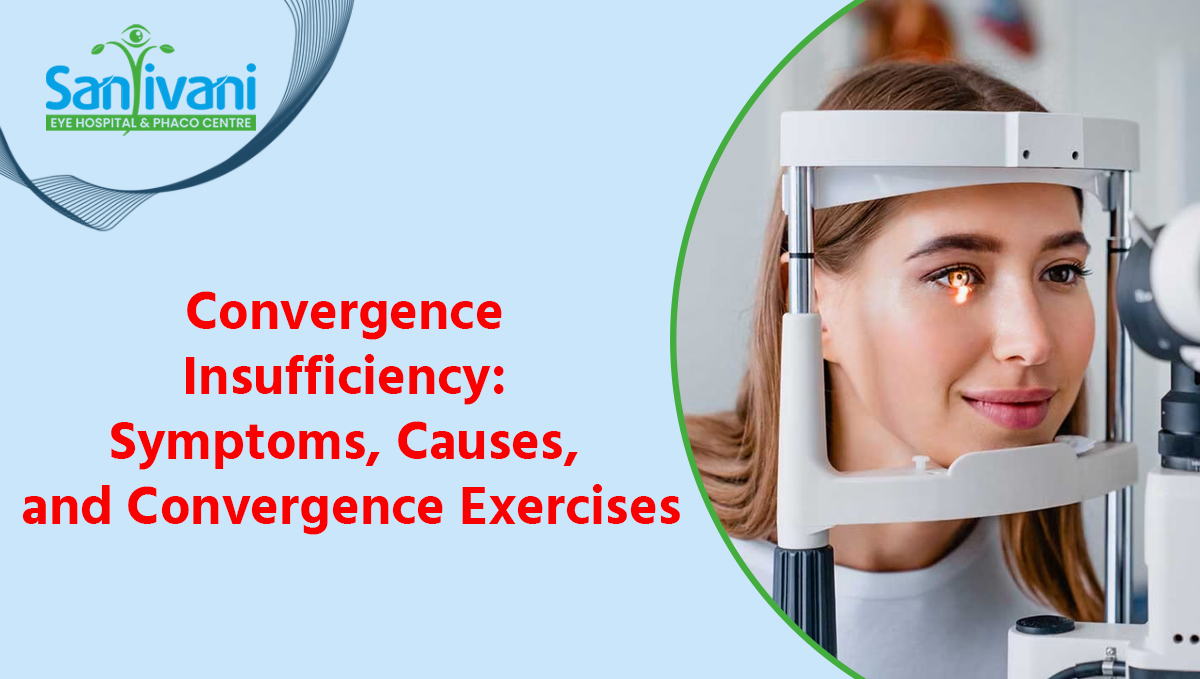
Convergence Insufficiency: Symptoms, Causes, and Convergence Exercises
Convergence insufficiency (CI) is a common binocular vision disorder where the eyes struggle to work together while focusing on close objects. This condition can lead to a variety of visual discomforts and affect daily activities, particularly tasks that involve prolonged near vision, such as reading or using digital devices. In this blog, we’ll explore the symptoms, causes, and effective convergence exercises to help manage and improve this condition.
Understanding Convergence Insufficiency
- Convergence: is the ability of the eyes to turn inward and work together to focus on a near object. When convergence is insufficient, the eyes fail to align properly for close-up tasks, leading to double vision, eye strain, and other visual disturbances.
Symptoms of Convergence Insufficiency
The symptoms of convergence insufficiency can vary from person to person, but common signs include:
1. Double Vision:
Experiencing overlapping or duplicate images, especially when reading or working on a computer.
2. Eye Strain and Fatigue :
Feeling discomfort or tiredness in the eyes after prolonged near work.
3. Headaches :
Frequent headaches, particularly around the forehead or eyes, which are often linked to visual strain.
4. Blurred Vision :
Difficulty focusing or seeing clearly, especially when switching between near and distant objects.
5. Difficulty with Reading :
Trouble with reading comprehension, frequent loss of place, or needing to re-read text often.
6. Closing or Rubbing Eyes :
An involuntary response to eye strain, where individuals might close or rub their eyes to alleviate discomfort.
7. Poor Depth Perception :
Difficulty judging distances or spatial relationships, which can affect coordination and activities like driving or sports.
Causes of Convergence Insufficiency
Convergence insufficiency can arise from several factors:
1. Visual Development Issues:
Some individuals may develop CI during childhood due to incomplete visual system development.
2. Genetic Factors :
A family history of binocular vision disorders may increase the risk of developing CI.
3. Neurological Conditions :
Conditions that affect the brain’s ability to control eye movements, such as certain neurological disorders or trauma, can contribute to CI.
4. Eye Muscle Weakness :
Weakness or imbalance in the muscles responsible for eye movement and alignment can lead to convergence problems.
5. Extended Near Work :
Prolonged activities that require intense near focusing, such as excessive reading or computer use, can exacerbate or reveal existing CI.
Diagnosing Convergence Insufficiency
To diagnose convergence insufficiency, an eye care professional will typically perform a comprehensive eye exam that includes:
- Visual Acuity Test : Assessing how well you can see at various distances.
- Convergence Tests : Assessing how well you can see at various distances.
- Ocular Motility Testing : Checking the movement and coordination of the eye muscles.
- Symptom Questionnaires : Using standardized questionnaires to assess the frequency and severity of symptoms.
Convergence Exercises for Relief
Convergence exercises are designed to strengthen the eye muscles and improve the coordination needed for effective convergence. Here are some commonly recommended exercises:
- How to Do It: Hold a small object, like a pen, at arm's length and focus on it. Slowly bring it closer to your nose while maintaining focus. Then, move it back to arm’s length and refocus on a distant object.
- Purpose : This exercise helps improve the eyes' ability to switch focus between near and far objects.
1. Near-Far Focusing :
- How to Do It: Hold a pencil vertically at arm’s length, focus on the tip, and slowly bring it closer to your nose. Stop if you start to see double or if the tip becomes unclear. Gradually increase the distance over time.
- Purpose : This strengthens the convergence ability by training the eyes to maintain focus on a near object as it moves closer.
2. Pencil Push-Ups :
- How to Do It: Thread three colored beads onto a string, with each bead spaced about 6 inches apart. Tie the ends of the string to a stationary object and hold it at arm's length. Focus on each bead in turn, ensuring the eyes converge on each one and not crossing or diverging.
- Purpose : This exercise helps train the eyes to converge correctly and improves depth perception.
3. Brock String Exercise:
- How to Do It: Similar to pencil push-ups, but use a pencil with a small weight attached to it. Move the pencil in a small, controlled "jumping" motion toward and away from your nose while maintaining focus.
- Purpose : This dynamic exercise enhances convergence and helps with quick adjustments in focus.
4. Jumping Pencil:
- How to Do It: Focus on a near object, then shift your focus to a distant object. Repeat this process, gradually increasing the time spent on each focus shift.
- Purpose : This exercise helps improve the speed and efficiency of focus adjustments.
5. Focus Shifting:
Tips for Managing Convergence Insufficiency
1. Regular Breaks :
Follow the 20-20-20 rule—every 20 minutes, take a 20-second break by looking at something 20 feet away to reduce eye strain.
2. Ergonomic Adjustments :
Ensure proper lighting and screen positioning to reduce glare and strain while working or reading.
3. Consistent Practice :
Incorporate convergence exercises into your daily routine for gradual improvement and long-term relief.
4. Professional Guidance :
Consult with an eye care professional or vision therapist for personalized recommendations and to track progress.
Conclusion
Convergence insufficiency can significantly impact daily life, but with the right approach, symptoms can be managed effectively. Recognizing the signs of CI, understanding its causes, and incorporating targeted convergence exercises can help alleviate discomfort and improve visual function. Regular eye exams and professional guidance are crucial for accurate diagnosis and tailored treatment. By taking proactive steps, you can enhance your visual comfort and overall quality of life.